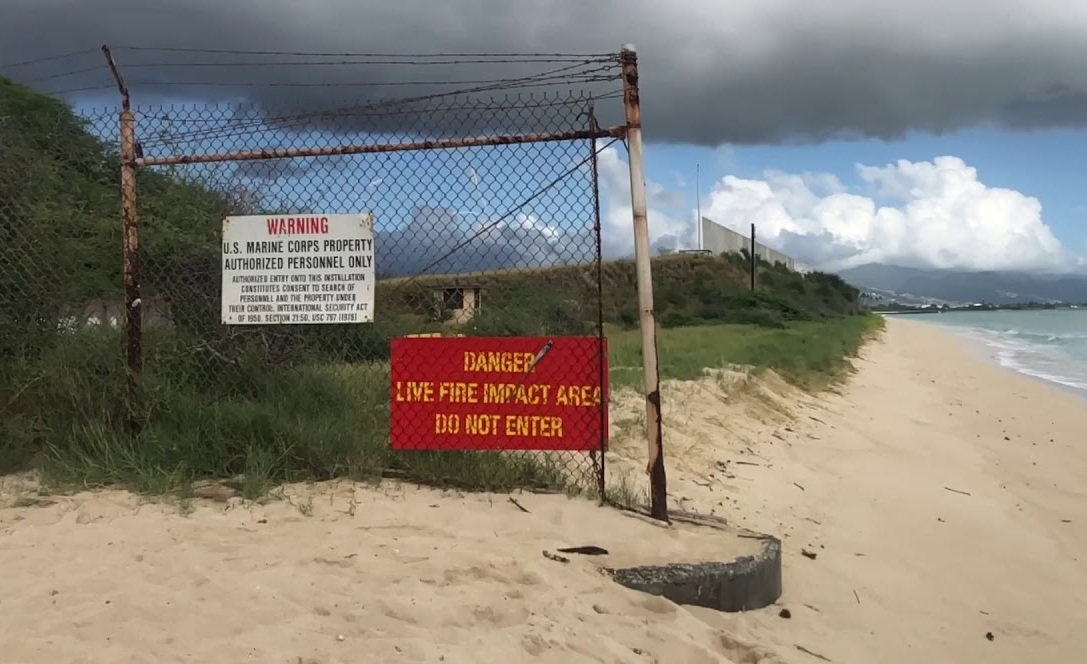
03 • 15 • 2023
Halt the Shoreline Armoring at Puʻuloa Rifle Range
Surfrider Foundation Oʻahu Chapter is demanding the Marine Corps conduct a thorough Environmental Impact Statement (EIS) to assess the human and environmental impacts of a 1,500 foot shoreline barrier along 'Ewa Beach.
The Oʻahu Chapter is celebrating the Navyʻs decision to relocate their berms further away from the ocean and to drop their seawall/sheet pile proposal. In 2023, a non-binding House Resolution and a Senate Resolution were passed requesting the Navy to relocate the berms. In February 2023, the Navy started the process of relocating the short firing ranges. The Marine Corps Base Hawaii intends to pursue the relocation of all four short-distance firing ranges located at the Pu’uloa Range Training Facility in ʻEwa Beach. We are excited that the community pressure to stop the shoreline armoring was successful and that they Navy is actively moving the berms further from the ocean.
In 2019, the US Marine Corps (USMC) proposed building a 1,500 foot steel shoreline barrier along the Puʻuloa Range Training Facility (PRTF) at 'Ewa Beach and adjacent to Pu'uloa Beach Park. PRTF is a firing range used by the USMC for training purposes. The USMC maintains that the 1,500 foot wall is needed to mitigate coastal erosion and protect the firing range. In March 2020, the US Marine Corps conducted an Environmental Assessment (EA) and determined that the project would not have significant environmental impacts. Surfrider Foundation Oahu Chapter, local government agencies, and community members, however, are concerned about the project's potential impacts on nearshore coral reefs, surf spots, and accelerating coastal erosion.
In a June 17, 2020 letter to the Secretary of the Navy, Surfrider Foundation Oʻahu cited numerous shortcomings in the Environmental Assessment. The Surfrider Foundation Oʻahu Chapter is calling on the Department of the Navy to conduct a more thorough Environmental Impact Statement (EIS) prepared by independent experts on the wall's environmental and human impacts. As part of this assessment, the Oahu Chapter requests that the Navy fully evaluate the long-term consequences of the wall and consider natural or nature-based alternatives.
In addition, the soils at the firing range are heavily contaminated with lead from decades of bullets. These soils are now actively eroding into the beach and marine environment. Surfrider is continuing to request that the Navy propose a long-term solution for the management of this important coastal area that protects the public and the environment.
